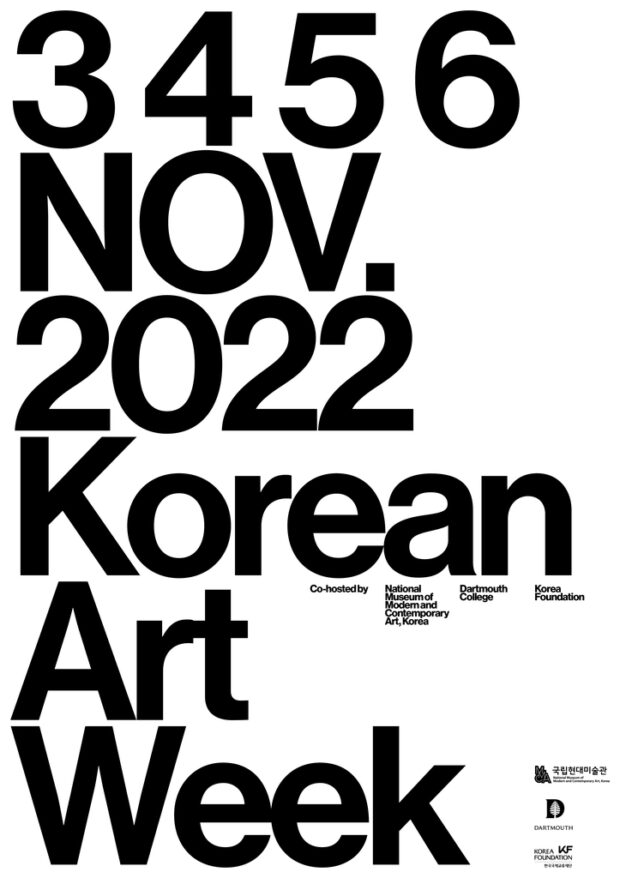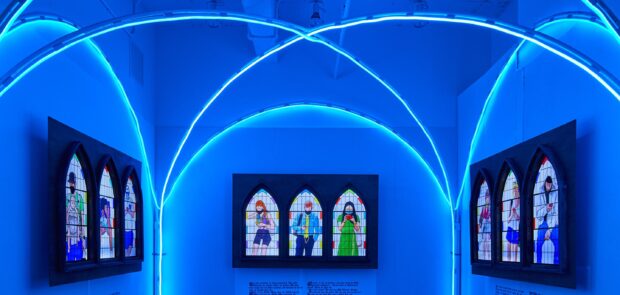It’s an old cliché, but one with staying power: try to visualize “Latin America,” and more often than not images of palm trees, sandy beaches, and dense rainforests come to mind. The tropical stereotypes are so persistent—and still so often invoked in exhibitions that attempt to survey art of the Americas—that it is fairly refreshing to encounter a show that deals with the natural world’s manufactured counterpart, namely the constructed urban landscapes that sought to define a new, modern identity for the region in the twentieth century. Taking the legacy of the modernist city as its theme, the Bronx Museum’s quietly devastating Beyond the Supersquare (on view May 1, 2014 to January 11, 2015) refuses to shy away from the thorny contradictions that lie at the heart of the built utopia in Latin America. Co-curators Holly Block and María Inés Rodriguez have presented the work of over thirty contemporary artists, mounting one of the most provocative and haunting shows of Latin American art in recent memory.

The titular “Supersquare” refers specifically to the supercuadra, a self-contained residential city block that served as the module for that most forward-looking of cities, Brasília. Famously carved out of the Amazon and inaugurated with much fanfare in 1960, Brasília is the apotheosis of the modernist dream and its inevitable failure: planner Lucio Costa’s vision for Brazil’s futuristic capital has been criticized as essentially inhuman, and just four years after its debut the city was overrun with tanks and military troops that ushered in a brutal dictatorship that would last over twenty years. The specter of Brasília looms large over the exhibition, and indeed it is summoned in a number of works included in the show. Mauro Restiffe’s photographic series Empossamento (2003) captures the inaugural festivities of popular president Lula da Silva, juxtaposing the fervor of exultant crowds with a shot of the vast, almost funereal emptiness of the following day. Alberto Baraya indicts Brasília’s superhuman scale in his Estudos comparados modernistas (2011), in which he photographed Oscar Niemeyer’s iconic government buildings along with his own hand holding a flower, possibly a symbol of the natural landscape supplanted by Costa’s vision—except the flowers are plastic, as lifeless as the concrete edifices.

The Brazilian capital is the best-known example of what emerges as the real subject of the exhibition, the conflict between the lofty expectations and bitter disappointments of the grand architectural experiments that were intended to bring about, as the curatorial team vaguely puts it, “progress.” But the parameters of progress were never clearly defined in Latin America, and several hypotheses are on view in Beyond the Supersquare. Did it entail urban planning from scratch, as in the case of Brasília? Or perhaps luxury was the most obvious measure of economic development. In a brilliant touch, exhibition designer Benedeta Monteverde has provided a small seating area with a lamp and coffee table by Isamu Noguchi, inviting visitors to sit down and peruse several illustrated architecture books while resting their feet on an animal skin rug. The installation is a testament to the seductive power of modern design, such as that featured in Terence Gower’s film Ciudad Moderna (2004), on view nearby. Re-cutting a series of scenes from the 1968 real-estate comedy Despedida de Casada, Gower analyzes Mexico City’s glamorous interiors that perhaps function better as set pieces than as actual living quarters.
The materiality of modernity is also a subject of consideration, captured most powerfully in André Komatsu’s small sculpture Base Hierárquica (United States) (2011/2014). An exceedingly simple structure, placed directly on the floor, it consists of a cube of stacked bricks that are supported only by four “popular” drinking glasses, an incongruous scenario that both unites and contrasts modern urban building materials. If the resilience of the glass is proven by the heaviness of its load, the threat of that load is made abundantly clear by the broken wine glass at the base of the structure. Celebratory imbibing, it would seem, is no longer appropriate when utopia has become a burden. Indeed, the exhibition adopts an unflinchingly critical stance toward the unmet aspirations that characterized modernism in Latin America, particularly with respect to its uneven distribution amongst those for whom it was ostensibly cultivated. In this regard, the most damning piece may be Alexander Apóstol’s Documental (2005), a brief video in the third and final gallery. In it, a man and two children, perhaps his sons, watch a triumphant advertisement for Venezuelan progress, made physical through urbanization projects like the Avenida Bolívar in Caracas. “Oh! In time this shall be a great nation,” the narrator boasts, “and I shall envision the spectacle!” The family, presumably of the working class that constructed such projects, is relegated to the outskirts of the spectacle literally and metaphorically: they watch the announcement on a small television in the main room of a shanty. Much maligned as an unwanted byproduct of urban development, the shantytown—which Carlos Bunga evokes in his Untitled, Model structures (2004), created from cardboard and packing tape—is here posited as a kind of supersquare itself, albeit an improvised one constructed from discarded materials, the flip side of Noguchi’s organic precision.

By pitting the ostensible democracy of rational living and the appeal of new building materials against the realities of social inequality and economic myopia, curators Block and Rodriguez wisely opt to pose difficult questions rather than provide easy answers. The success of this strategy, it must be said, depends largely on the visitor’s prior familiarity with architectural history, or at the very least an awareness of some of the major building projects in the Americas. As a result, the tone of the show can occasionally veer towards the academic, perhaps owing to its development out of a scholarly symposium held at the Museum in 2011. Nowhere is this more evident than in the piece by Pedro Reyes that opens the exhibition, a film of a mock game show titled The Architecture Challenge that was staged as part of the original conference. Competing in that challenge were several noted historians and architects who were tested with such questions as, “Who was the designer of the mosaic sidewalks of Copacabana Beach?” (Answer: famed Brazilian landscape planner Roberto Burle Marx.) The Architecture Challenge is a disarmingly playful introduction to this serious-minded show, but its appeal may be limited to those already in the know.

When dealing with architecture it is all too easy to lose sight of the fact that it is fundamentally a social art, to reduce it to a series of plans and models, or to distill it to a few lines of trivia. The most thought-provoking works in Beyond the Supersquare remind us that the cities, neighborhoods, and buildings under scrutiny are, ultimately, lived sites. That fact is suggested in Daniela Ortiz’s Habitaciones de Servicio (2012), which renders class inequity visible by isolating and reproducing the plans of various bedrooms within a single private residence, the service quarters invariably dwarfed by the rooms allotted to the employer. It is also present in Jordi Colomer’s Avenida Ixtapaluca (2009), a film that begins with an aerial view of a Mexico City suburb so uniform and colorful that it at first appears to be a model rather than a real neighborhood. The camera surveys a network of streets that appears strangely uninhabited, the only signs of life being various instances of graffiti and the occasional pedestrian. But then Colomer switches vantage points. The viewer is now on the ground, following a woman who carries a piñata shaped like a small person, an artificial doppelgänger. She stops to speak to a couple of friends she meets on the sidewalk before passing the piñata to an older man, who continues the journey. Like the exhibition as a whole, the video is less a puzzling narrative than a document of the paradox that lies at the root of the modernist project: utopia may have been an illusion long since abandoned, an inadequate or even impossible fit for the conditions of everyday living, but it was never an abstraction. It persists, not in the monuments to a future that never arrived, but in the ordinary, quotidian spaces that continue to shape the lives of their very human inhabitants.






Be First to Comment